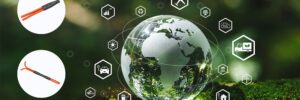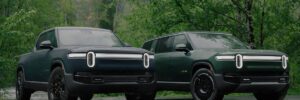Who says sleek, sexy, head turning EVs need to cost a fortune? Certainly not the design executives at Mitsubishi headquarters…
Wait, Mitsubishi??
Yes, THAT Mitsubishi.
The once struggling (eh, maybe even still struggling—just a bit less now) car manufacturer has been quietly regaining the confidence of European and American drivers alike, and at price points that will have you truly rethinking the sanity of those mortgage-sized car payments you’ve been making. Now, if you insist upon remaining a label snob, then this vehicle isn’t for you, but if you’re a value seeker, a trendsetter, and would rather retire sooner than later, you may want to reconsider this latest entry point EV option, as it stacks value for days without sacrificing form, function, performance, or style. In fact, the newly refreshed 2025 Outlander may actually represent the best PHEV value on the market today… SRSLY!
The 2025 Mitsubishi Outlander Plug-in Hybrid Electric Vehicle (PHEV) has mastered the balance of cutting-edge hybrid technology and sleek design with dollars and sense. Offering a range of color, trim, and engine options to suit your unique style and driving needs, this plug-in-hybrid offers something for the people—for ALL of the people. Whether you’re a traveling soccer team chauffeur, a Sherman Oaks cruiser, or a true “outlander” yourself, spending weekends tackling rugged, outdoor adventures, this Outlander has something for everyone.
Enhanced Electric Range
One of the standout features of the 2025 Outlander PHEV is its 20kWh battery, which provides an extended electric-only range of 38 per charge. The increased range makes the Outlander PHEV an even more appealing option for eco-conscious consumers and daily commuters alike, while also enabling partygoers to take gas-powered road trips abroad. While the real ecological impact of the EV world is most influenced by our day-to-day travels to work and around town, the hybrid option here allows the vehicle to extend its usefulness beyond that daily commuter range—without necessitating those cumbersome 30-minute EV “fill-ups” associated with road tripping a full electric vehicle.
Improved Efficiency
The introduction of a new heat pump system in the 2025 model boosts overall efficiency in this tricky realm, especially in colder climates. Their new system enhances the vehicle’s ability to maintain a comfortable cabin temperature without compromising electric range, something EV consumers constantly battle when it comes to icy wintertime temperatures. Mitsubishi’s focus on this kind of efficiency ensures that drivers can enjoy a more sustainable and cost-effective driving experience without having to worry as much about daily recharging for those extended commuter trips into town.
Stylish and Functional Design
From vibrant color choices that make a statement to trim levels that cater to every creature comfort and convenience, perhaps one of the most impressive elements of the new 2025 Outlander is its plethora of options and trim packages. Usually, budget-friendly car manufacturers keep their costs down by way of limiting options, trim levels, and mid-run design updates, but this is not the case here. In fact, Mitsubishi opted for several updates to the interior and exterior of the 2025 model, with its flashier, less cluttered front end and bold aerodynamic accents, the designers at Mitsubishi made an already attractive design look decidedly sharper and more upscale. Inside, the cabin offers a spacious and comfortable seating environment, complete with advanced technologies and truly high-end materials that will not only enhance your driving experience, but will have your passengers looking at each other in disbelief as they double-take that Mitsubishi logo on the steering wheel.
Cutting-Edge Technology
The 2025 Outlander PHEV is equipped with the latest in automotive technology that money can buy. Drivers will enjoy a suite of advanced safety features, including adaptive cruise control, lane-keeping assist, and automatic emergency braking. The infotainment system in the new model has also been upgraded, providing seamless connectivity and access to a wide range of entertainment and navigation options.
Seven Color Options Make Your Outlander Stand Out
The 2025 Outlander PHEV offers a variety of stunning color options to help you express your style. Whether you prefer a bold look or something more understated, there’s a color for every horoscope. Looking for something more uniquely you? More modern? Customers can even opt for a two-tone look with an optional black roof.
Red Diamond: A bold, striking shade that adds a dynamic edge.
Black Diamond: Sophisticated and timeless, this deep black finish exudes elegance.
White Diamond: Clean and radiant, this premium white accentuates the SUV’s sleek contours.
Labrador Black Pearl: A rich, polished black with a pearl-like luster for a refined look.
Alloy Silver: A versatile and cool metallic tone that enhances the vehicle’s stylish design.
Cosmic Blue: A deep, celestial hue that adds a touch of uniqueness.
Graphite Gray: A bold, modern gray with a hint of metallic shine for a contemporary aesthetic.
Interior Comfort: A Space Designed for You
The 2025 Outlander PHEV is built to provide comfort and style in every trim. Whether you choose the $40-43k USD ES and SE models, or spring for the more luxurious SEL and GT model ($46-48K USD respectively), the interior of the new Outlander offers plenty of space amidst modern amenities. Here’s a closer look at what’s lies inside the various trim package options:
Seating and Upholstery:
ES Trim: Durable cloth seats, perfect for everyday driving.
SE Trim: Upgraded to more premium fabric for a refined feel.
SEL Trim: Leather upholstery for a touch of luxury.
GT Trim: Ventilated seats and high-end materials for maximum comfort.
Infotainment and Technology:
All trims come standard with Apple CarPlay and Android Auto for seamless connectivity.
ES & SE Trims: 9-inch touchscreen.
SEL & GT Trims: 12.3-inch digital display.
Comfort Features:
SE Trim: Heated steering wheel and upgraded climate control.
SEL Trim: More advanced tech with a larger touchscreen and better sound quality.
GT Trim: Premium sound system, ventilated seats, and more for a luxurious ride.
Driver Assistance Features:
All trims come standard with the Mitsubishi Safety Suite, including Lane Departure Warning and Adaptive Cruise Control, but the SEL and GT trims feature Forward Collision Mitigation and Blind Spot Warning for added safety.
Balancing the Pros and Cons
While Mitsubishi dealers are eager to see a new EV option in their showrooms, there are concerns about how it will compare to the sales volume of the Mirage, which currently accounts for nearly a third of Mitsubishi’s sales, and the likely push sales teams will face from Diamond Star Motors executives. And while the 2025 Mitsubishi Outlander PHEV has a lot going for it, it’s important to recognize its limitations. Its bold styling stands out, and its 38 miles of estimated EV range and competitive pricing offer plenty of value potential, but the Outlander PHEV still falls short in some areas when compared to its peers. Despite these drawbacks; however, the Outlander PHEV still remains a solid mid-pack, high-value proposition among competitors.
Driving Dynamics: The Outlander PHEV feels peppier than its non-hybrid sibling, but it’s otherwise somewhat uninspiring to drive. The general ride and comfort are fine for an SUV, but cornering lacks that sportier feel offered by its competitors.
Fuel Economy: Once the EV battery is depleted, the fuel economy comes in at 25 city and only 27 on the highway. While approaching 30 MPGs for a medium sized SUV is an admirable accomplishment, we all know our real-life mileage varies—usually for the worst–leaving us feeling a bit disappointed when compared to its market rivals.
That Third Row Seat: Let’s be honest here, you really need to move to a large SUV platform to get true third-row adult seating comfort, and in this package the tiny third row is by no means going to accommodate any grown adults. You’ll make it work for that short jaunt from the restaurant to the concert, but any hopes of road tripping with you and 8 friends is a no-go from the start.
Charging Port: The CHAdeMO charge port is beginning to feel outdated and may create some future-proofing headaches within the public charging ecosystem as it increasingly heads in the direction of the more efficient CCS model.
Dealer Network: Let’s face it, Mitsubishi is still a small fry in a large pond, and until the brand turnaround is complete, you’re facing a rather limited dealer network that could present some maintenance option challenges. That said, Mitsubishi isn’t nearly extinct by any means. To date, the car maker has 321 dealerships in over 300 cities nationwide, with a presence a nearly every notable metropolis. But if you live or plan to live in out west, your options — for dealerships —excluding the West Coast itself—begin to dry up quickly.
Looking Ahead: Mitsubishi’s Electric Vision
In addition to the exciting updates for the 2025 Outlander PHEV, Mitsubishi has ambitious plans for the future of its fleet. The automaker recently announced at a dealer meeting that a brand-new electric crossover is set to arrive in US showrooms in 2026. Expected to be a crossover coupe there is no word yet about whether it will be based upon the current Eclipse Cross, a cross-manufacturer platform, or some sort of entirely new model, but the move puts Mitsubishi on a cautious but smart track towards rebuilding its once world renown reputation.

Done Right, This Could Mark a New Beginning
The 2025 Mitsubishi Outlander PHEV represents a significant step forward for Mitsubishi in the electric vehicle market. With its enhanced electric range, improved efficiency, stylish design, and cutting-edge technology, this model is poised to capture the attention of consumers looking for a reliable and eco-friendly vehicle. As the automotive industry continues to evolve, Mitsubishi’s obvious commitment to innovation ensures that the Outlander PHEV remains an attractive option. And with another brand-new electric crossover on the horizon, the future looks bright for Mitsubishi and its fan base. Whether it ends up being enough to attract buyers from other brands remains to be seen, but as far as we can tell at the moment, all signs point to yes.









